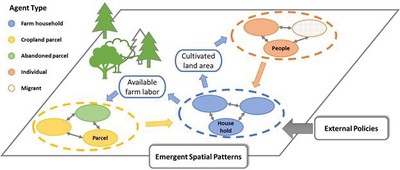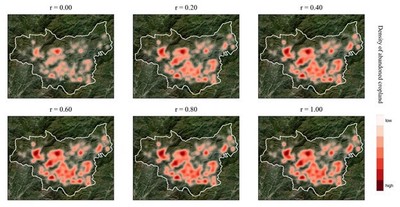Understanding human-environment interrelationships under constrained land-use decisions with a spatially explicit agent-based model
Application of Agent-Based Modeling in Human-Environment Interactions
ABM-CALM: Agent-Based Model for Cropland Abandonment and Labor Migration

This study applies ABM-CALM to explore human-environment interrelationships under constrainted land-use decisions.
The study site encompasses the entire township within Tianma National Nature Reserve (Anhui, China). Two forest conservation/restoration programs exist:
- Congversion of Cropland to Forest (CCFP)
- Ecological Welfare Forest Program (EWFP)
The model seeks to understand social-ecological dynamics due to feedback loops occuring between cropland abandonment and labor migration, under the backgroun of the restraction of the abandonment of the “basic” land (Chen et al., 2019).
The emerging hotspots of risks of cropland abandonment is sensitive to the relaxation of the abandonment restriction, especially under the scenario where is the relaxation level is relatively low. Such emergence can be informative for adjusting policy making that aim to reconcile agricultural preservation and forest restoration.

See mode details on the project: Modeling coupled human and natural systems with agent-based simulations
Author: Qi Zhang
Updated: December 2022